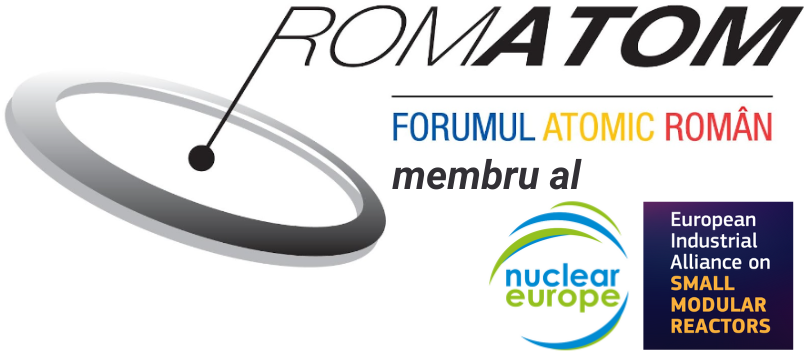The official position of the Roman atomic forum compared to the situation of the unplanned opposites of the Cernavoda CNE from March 25-29, 2018
Romatom understands the public concern towards the unplanned stops of units 1 and 2 Cernavoda and the power reduction of unit 2 from March 25-29, 2018, but from a technical point of view and of nuclear security, we want to make the following details:
- Unplanned stops can be of several types: (i) automatic disconnections of the reactor as a result of the intervention of the fast stop systems or (II) controlled stops as a result of the conservative decision of the operators, to identify parameters that exceed the standard conditions and (III) controlled, preventive stops, due to the need to carry out some remedial works.The controlled stop decisions are made in accordance with the nuclear security norms and procedures applicable in such situations.The reduction of power can also arise from the need to carry out remedial works, but the reactor remains permanently connected to the network with all the insured nuclear security functions.
- As an international practice in the industry, a number of unplanned stops are estimated annually that are budgeted in order to balance the production and feed of the electricity delivery contracts being specific to any type of reactor and, internationally, are announced in the same way as nuclearelectric.
- Although there were two unplanned stops and a reduction in power in a very short period of time, which generates a state of concern at the public level, in terms of nuclear security, risk for staff, population and the environment, these events do not have a negative impact on the categories mentioned above.
- Romatom is convinced that nuclearelectrica, through its experts, implements all the necessary measures to reduce the frequency of such events, the company being among the safest producers of nuclear energy globally.
- Unplanned stops cannot be classified on the International Scale of Nuclear Events (Ines) of the International Atomic Energy Agency in Vienna, where level 0 (the lowest) refer exclusively to deviations, stops from Cernavoda CNE not doing part of these categories.
Unfortunately, the recent stops from CNE Cernavoda were mistakenly associated with the preliminary conditions that led to the Chernobyl accident.This association is technically impossible from the following considerations:
a) The differences between Candu type reactors (technology used in Cernavoda) and RBMK (as was the Cernobil) are fundamental.The defense in the specific depth of the Candu reactors actually means a fundamental approach to nuclear security from the perspective of the project, construction, operation.
b) In the case of Candu reactors, there are 4 special security systems: two independent, redundant and different constructive systems, the cooling system of the active area of the reactor and the tire system.
| Characteristic | OPIUM | RBMK |
| Protective tire | Protective tire | Without the protective tire |
| Stop systems | -2 systems (absorbent bars and liquid injection)
-2 seconds as an action time -Independent, redundant |
-1 Single Bar Stop System
-10 seconds action time -its effect depends on the reactor's condition |
| Moderator | Heavy water | Graphite |
c) the basic cause of the Chernobyl accident was a deficiency of designing the stop system that, under the conditions of carrying out an unfortunate experiment, which is not the case at CNE Cernvoda, introduced an uncontrolled increase of the reactivity followed by the melting of the active area and the initiation of the accident so publicized.
d) in the case of the RBMK reactor, the stop system and the control system were not independent, therefore there is the possibility that key security systems will be ignored and operated by manual adjustments of the control system.In the case of CANDU -type reactors, the two systems are independent, automatically acting at the exit of the normal operating parameters.
e) The reactor from Chernobil did not have the protective tire, and the key factor in the major radioactivity release in the environment was the energy resulting from the burning of the graphite, a moderator specific to the type of the RBMK reactor.The Candu reactors have a system of envelope and retention of the radioactive products, being designed to cope with a severe accident and the moderator used is heavy water.
Therefore, any association between unplanned stops or power reductions of units 1 and 2 Cernavoda and Cernobil's causes are impossible to support through technical and operating arguments, Romatom recommends prudence and rigorous documentation in treating these topics in the public space.
"Nuclearelectrica acts in strict compliance with nuclear security procedures and I am convinced that these stops, although without a major nuclear security impact, are analyzed to ensure that such events will not be repeated. In the nuclear industry they are continuously learned from experience, and once the causes are investigated, all measures are taken to avoid their recurrence.They do not represent incidents or accidents, they are simply technical events that need to stop the reactor. ”- Teodor Chirica, honorary president of Romatom.


